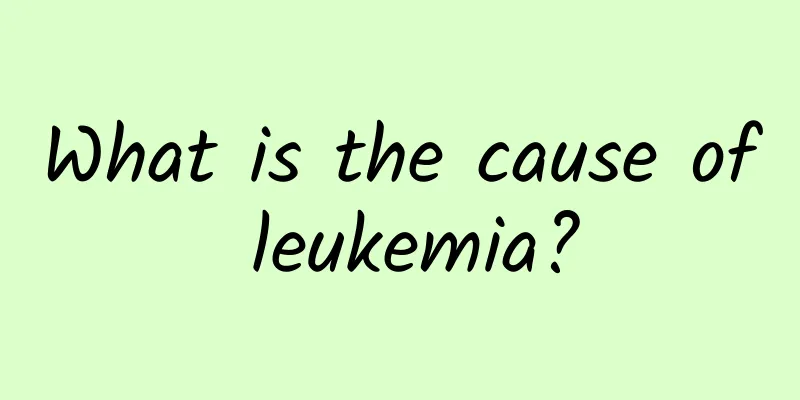Degrees of anemia

|
Many people don’t know that anemia is actually divided into different types clinically. Most anemias are caused by multiple cell tissues. Anemia can be divided into mild, moderate, severe, and even extremely severe. Severe anemia is extremely harmful and may cause unnecessary trouble if you are not careful. In terms of treatment, you need to find a treatment plan and slowly regulate it through medication or other methods. 1. Definition of anemia Anemia refers to the fact that the number of red blood cells or the amount of hemoglobin per unit volume in peripheral blood is lower than normal. According to the World Health Organization, the lower limit of Hb value is 110g/L for 6 months to 6 years old, and 120g/L for 6 to 14 years old. For every 1,000 meters increase in altitude, Hb increases by 4%. Values below this are considered anemia. Due to physiological anemia and other factors, the Hb value of infants under 6 months old varies greatly. There is currently no unified standard. my country's Pediatric Hematology Conference has tentatively determined that Hb < 145g/L in newborns, Hb < 90g/L in 1 to 4 months, and Hb < 100g/L in 4 to 6 months are anemic. 2. Anemia grades Anemia can be divided into four degrees: mild, moderate, severe and extremely severe according to peripheral hemoglobin or red blood cell count; hemoglobin from the lower limit of normal to <90g/L is mild, ~60g/L is moderate, ~30g/L is severe, and <30g/L is extremely severe; neonatal hemoglobin is 144-120g/L is mild, ~90g/L is moderate, ~60g/L is severe, and <60g/L is extremely severe. The most important thing for treatment is to find the cause and conduct targeted treatment. Patients with acute massive blood loss should actively stop bleeding, while quickly restoring blood volume and transfusing red blood cells to correct anemia. Drug treatment of autoimmune hemolytic anemia mainly uses immunosuppressants such as glucocorticoids. Chronic aplastic anemia is mainly treated with cyclosporine combined with androgens. Other treatments : In emergency situations, patients with severe anemia, the elderly, or anemia patients with cardiopulmonary insufficiency should be transfused with red blood cells to correct anemia and improve the body's hypoxia. Prognosis: Treatment is targeted at the cause and the prognosis is good. Daily care 1. Pay attention to the bleeding tendency of anemic patients, such as skin and mucous membrane bleeding, epistaxis, gingival bleeding, fundus bleeding, etc., and give symptomatic and hemostatic treatment. When massive gastrointestinal bleeding occurs or there is a risk of intracranial hemorrhage, various rescue drugs and supplies should be prepared for rescue. 2. For the care of anemia, the wards must be kept clean and the air must be disinfected every day. Those with decreased white blood cell count should be placed under protective isolation to reduce infection in anemia patients. 3. Pay attention to oral hygiene and anal hygiene of patients with anemia. Rinse your mouth after meals and before going to bed to prevent oropharyngeal ulcers. Commonly used mouthwashes include normal saline. Nursing care for anemia requires prevention of necrotic ulcers around the anus that can lead to sepsis. 4. Those with extensive bleeding on the skin and mucous membranes should take precautions to prevent infection. Those with high fever and sweating should change clothes promptly. Patients with anemia need to avoid catching a cold. 5. Patients with acute and severe anemia must stay in bed and rest.Dietary conditioning: The diet should follow the dietary principles for anemia patients, supplement the deficient substances and adjust the dietary structure based on the causes of anemia. For example, for nutritional anemia, give a diet rich in iron, folic acid or vitamin B12; patients with stomatitis and glossitis should eat warm soft food. Patients with severe aplastic anemia have a tendency to bleed and should be given residue-free semi-liquid food; when gastrointestinal bleeding is severe, they should fast. |
<<: Taboos of pepper foot bath
>>: Early symptoms of myocardial infarction
Recommend
How long will the small rash caused by hormone discharge last?
In daily life, if the skin comes into contact wit...
Bleeding after needle removal
Acupuncture requires the needle to be inserted in...
Tonsillitis dietary therapy, three methods to teach you
What are the dietary treatments for tonsillitis? ...
Is Varicose Cord Surgery Painful?
Varicose cord is a common clinical disease, which...
How to get pregnant quickly if the left fallopian tube is blocked?
Obstructed fallopian tubes can cause certain harm...
Hypoxic-ischemic encephalopathy
Hypoxic-ischemic encephalopathy is a brain diseas...
It is a pity if you don't know about this free way to strengthen your body. It can prevent aging and strengthen your internal organs.
The tongue is a protrusion on the floor of the mo...
Is moxibustion effective?
Moxibustion is a commonly used treatment method i...
Feeling uncomfortable after porcelain teeth installation
Many people feel a little uncomfortable after hav...
Do you really know what harm kidney deficiency has?
Many people simply believe that kidney deficiency...
What Chinese medicine should I take for toothache?
There are many reasons that can cause toothache, ...
The efficacy and function of stinkweed root
Many people don’t know what stinky grass root is....
Bleeding recurs after medical abortion
Women who undergo abortion surgery must pay atten...
Why doesn't the umbilical cord fall off after the full moon?
When a baby is just born, his body is very fragil...
I get acne on my face because I masturbate too much
For many male friends, if they masturbate frequen...









